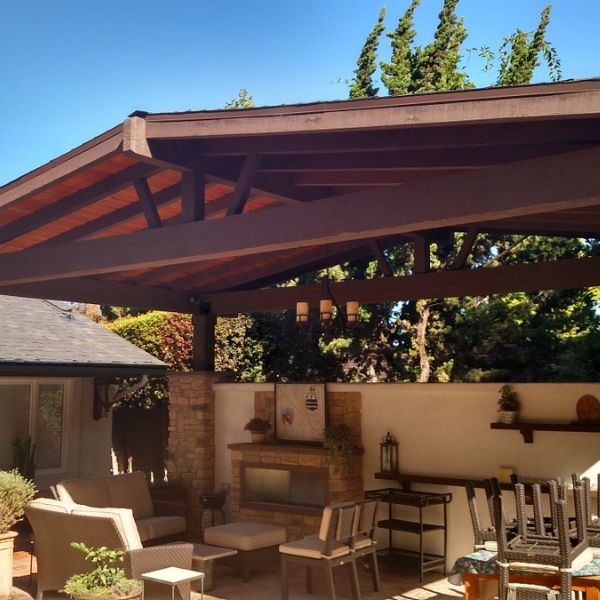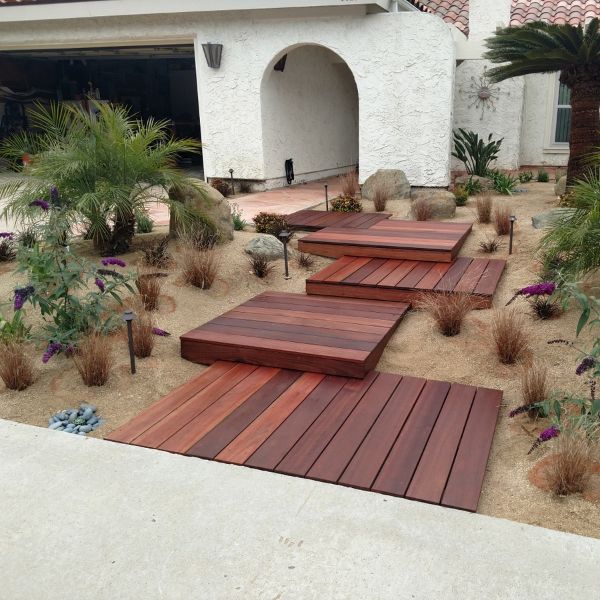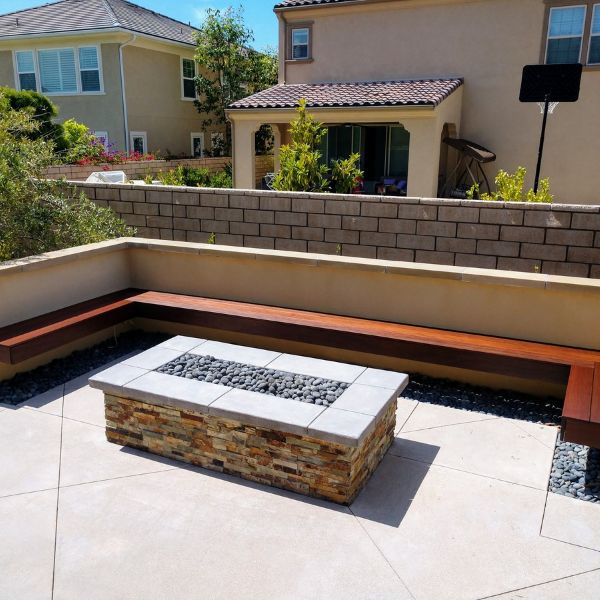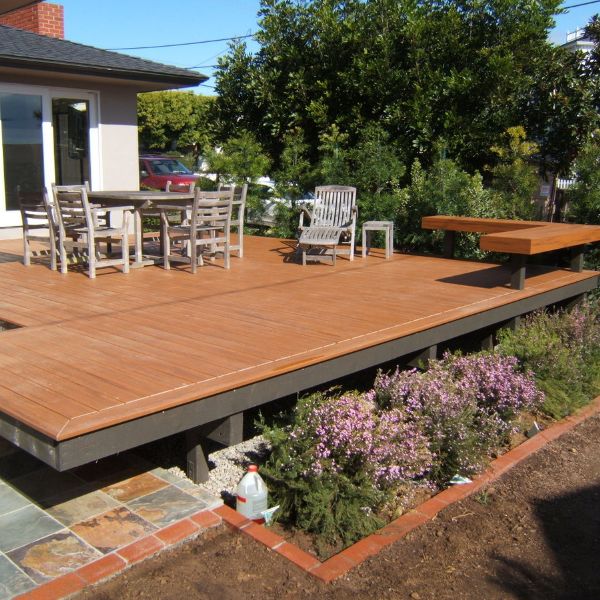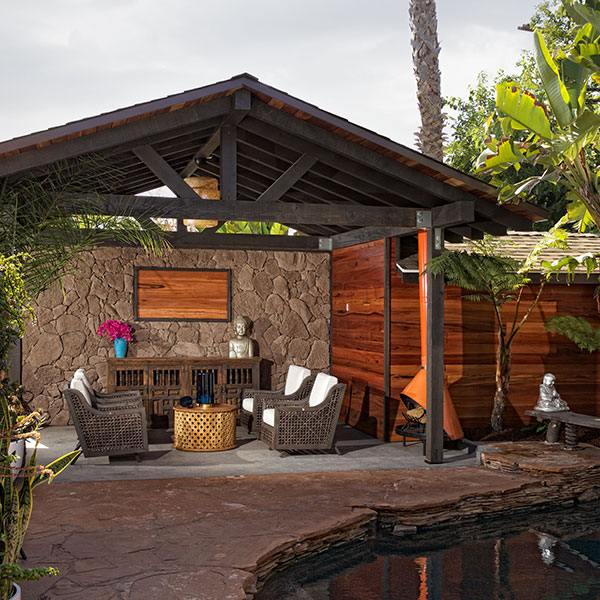Improve Your Space With Gravity Retaining Walls
If you’ve ever admired beautiful gravity retaining walls and thought about having them in your own home, you’re in the right place! Wilson Woodscape, led by our landscape contractor in San Diego Jeff Wilson, is experienced in constructing these retaining walls. Jeff doesn’t just ensure they work well, he also adds a touch of beauty to your landscape. You can trust our skilled landscaper to create your walls with precision and care.
If you want to make better use of your space or deal with slopes and soil erosion on your property, think about gravity retaining walls. Give our San Diego office a call at 619-838-1398 to get started today!
What Are Gravity Retaining Walls?
Gravity retaining walls are a popular and cost-effective solution for holding back soil and are an important aspect of landscape design. They’re made of heavy materials such as concrete blocks, bricks, natural stones, and interlocking concrete blocks.
They’re designed to rely on their weight to provide stability and support to the soil, preventing erosion and landslides. These walls are typically used for low-height retaining walls and can be a great option for residential gardens, commercial landscaping, and other similar applications.
Purpose of Gravity Retaining Walls
Gravity retaining walls have a wide range of applications in both residential and commercial settings. They can be used to create level areas for patios, gardens, play areas, or other outdoor living spaces, enhancing the functionality and aesthetics of your property. Gravity retaining walls are also frequently used in commercial settings, such as landscaping, parking lots, and building retaining walls.
They’re commonly used to:
- Create level areas on sloping properties
- Prevent soil erosion
- Provide stability
- Retain soil near structures such as culverts, underpasses, and bridges
- Support a wide range of soils.
Components of a Gravity Retaining Wall
A gravity retaining wall is comprised of four key components:
- The Wall Itself: This is the main structural component, providing stability and support.
- The Foundation: It ensures a stable base for the wall to rest upon.
- Drainage Materials: These direct water away from the wall to avoid pooling around the base.
- Backfill Material: Used to fill in the area behind the wall, offering additional stability and support.
Why Choose Wilson Woodscape for Your Gravity Retaining Walls?
Wilson Woodscape is the perfect choice for your gravity retaining wall project in San Diego. With 40 years of construction experience and 25 years of landscape experience, Jeff Wilson specializes in exterior structural and ornamental woodwork, delivering outstanding results. He’s dedicated to providing exceptional customer service, is available to address any queries, and offers support throughout the project.
Wilson Woodscape’s gravity wall system is designed to be space-efficient, easy to install, and offers a robust and steady structure due to the weight of gravity and concrete. For your next gravity wall project, choose Wilson Woodscape to elevate your space with unique concepts that incorporate custom ironwork, woodwork, and concrete work, including tall gravity walls.
Benefits of Gravity Retaining Walls
There are several benefits to using gravity retaining walls in construction projects:
- Space Optimization: Gravity retaining walls are ideal for creating level areas on sloping properties, and expanding usable space for landscaping, gardening, or other purposes. They also allow construction close to property lines, maximizing space.
- Versatility: These walls offer strength, durability, and erosion prevention, and come with various design options. They can be constructed from materials like masonry, concrete, stone, brick, or wood, providing a wide range of design possibilities.
- Cost-Effectiveness: Gravity retaining walls require fewer materials and labor during construction, resulting in lower upfront costs. They also entail minimal maintenance, leading to long-term cost savings.
- Ease of Installation: Known for their straightforward design and assembly, gravity retaining walls are a popular choice for both DIY enthusiasts and professional contractors. They offer simplified construction, reduced construction time, and cost-effectiveness.
- Long-Lasting and Reliable Solution: Gravity retaining walls provide a stable and enduring solution for retaining walls, ensuring they stand the test of time and remain reliable for years to come. They require minimal maintenance, adding to their appeal as a practical and efficient choice.
Types of Gravity Retaining Walls
Concrete Gravity Retaining Walls
Concrete gravity retaining walls are the most common type of gravity walls and are made of precast concrete blocks or poured-in-place concrete. They’re ideal for large-scale projects and can withstand high loads of soil pressure and other lateral forces.
Stone Gravity Retaining Walls
Stone gravity retaining walls are made of natural stone or manufactured stone products and are popular for their rustic and natural appearance. They’re suitable for smaller-scale projects and are often used in landscaping and garden design.
Brick Gravity Retaining Walls
Brick gravity retaining walls are popular for their aesthetic appeal. They’re commonly used in residential settings and can be reinforced with steel or concrete to increase their stability.
Wood Gravity Retaining Walls
Wood gravity retaining walls are ideal for smaller-scale projects, such as garden beds or terraced landscapes. They’re cost-effective but require regular maintenance to prevent rotting and decay.
Design Considerations
Site Conditions
Site conditions significantly impact the stability of gravity-retaining walls. It’s essential to consider geological conditions, drainage, and any adjacent structures when designing your gravity retaining wall.
Accurate site evaluation and planning can help mitigate potential issues and ensure a successful outcome for your project.
Selecting Materials
Choosing the right materials for a gravity retaining wall is crucial to its effectiveness and durability. The materials used should be strong enough to resist the soil’s pressure behind the wall. Common materials used for gravity retaining walls include concrete blocks, precast concrete panels, and natural stone.
Wall Height
The height of the wall is also important when designing a gravity retaining wall. A taller wall will require more reinforcement and a thicker base to resist the soil’s pressure behind it. The height of the wall should also take into account any potential settlement of the soil, which could cause the wall to lean or crack over time.
Wall Thickness
The thickness should be proportional to the height of the wall, with taller walls requiring thicker bases. The thickness of the wall should also take into account any potential seismic activity in the area, which could cause the wall to shift or crack.
Soil Reinforcement
Soil reinforcement can be achieved through several methods, including using:
- Geotextiles
- Geogrids
- Soil nails
- Ground anchors
- Steel mesh
- Concrete
- Timber
The reinforcement method used will depend on the soil conditions, the height of the wall, and the desired lifespan of the wall.
Other Considerations
When designing and constructing a gravity retaining wall, there are other important considerations to take into account, such as:
- Drainage: Proper drainage is essential to prevent water from building up behind the wall and causing damage. The design should include measures such as weep holes, drainage pipes, or gravel backfill to allow for the proper flow of water.
- Steep Slopes: Gravity retaining walls can stabilize steep slopes and prevent erosion. However, the design and construction of these walls require special attention to ensure their stability and effectiveness. The use of soil reinforcement and proper drainage is especially important in these situations.
- Plants: Incorporating plants in the design of a gravity retaining wall can enhance its visual appeal and provide ecological benefits, such as erosion control and habitat creation. The use of native plant species can also improve the wall’s resilience and reduce maintenance needs.
- Lighting: The incorporation of lighting in the design of a gravity retaining wall can enhance its aesthetic appeal and improve visibility and safety in outdoor spaces. Options include solar-powered or low-voltage lighting fixtures that can be integrated into the wall’s design.
- Erosion Control: Gravity retaining walls can prevent erosion by stabilizing slopes and controlling the water’s flow. In addition to their functional benefits, they can also enhance the visual appeal of landscapes and provide a habitat for plants and wildlife.
Maintenance
Maintaining a gravity retaining wall is essential to ensuring its effectiveness and longevity. Some maintenance tasks include:
- Regular inspection of the wall for cracks, rots, or signs of movement
- Monitoring the wall for any signs of erosion, such as soil erosion or shifting of the wall
- Removing any debris or vegetation that could affect the stability of the wall
- Repairing any cracks or damage immediately
- Maintaining the drainage system to ensure proper water flow and prevent water buildup behind the wall
Frequently Asked Questions
Gravity retaining walls are designed to resist sliding, overturning, and bearing forces. They can be constructed from concrete, stone, or masonry units and are economical for heights up to three meters.
Gravity retaining walls rely on their weight to resist the lateral pressure exerted by soil or water. Other types of retaining walls, such as cantilever or anchored walls, rely on internal reinforcements or anchoring systems to achieve stability.
The stability of a gravity retaining wall is maintained by ensuring that the weight of the wall is sufficient to resist the lateral pressure of the soil. This is achieved by selecting the appropriate materials, wall height, and wall thickness for the specific application.
The typical height for a gravity retaining wall ranges from three to 10 feet, although walls up to 20 feet high can be constructed with the proper design and reinforcement.
Wilson Wooscape Can Elevate Your Landscape
If you’re planning a landscaping or civil engineering project that requires a gravity retaining wall, contact Wilson Woodscape at 619-838-1398 to discuss your options. Our San Diego landscape contractor can make your dream space a reality.

